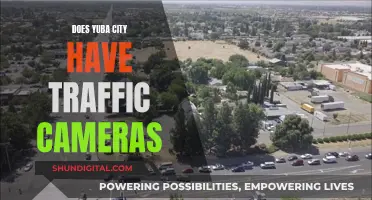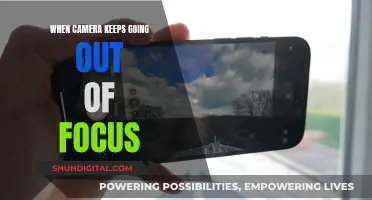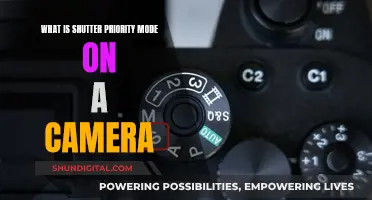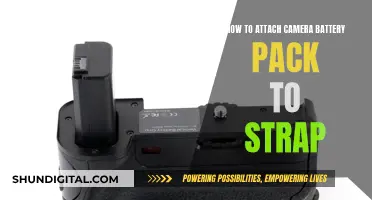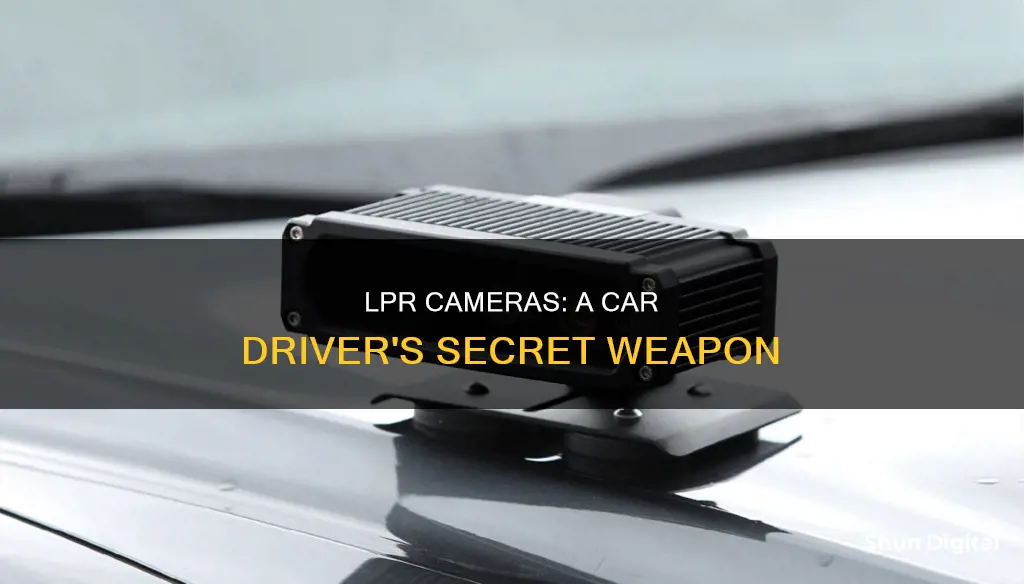
LPR cameras, or License Plate Recognition cameras, are advanced traffic sensors used to capture and digitize images of license plates. They are commonly used to control access to gated communities and other non-residential properties, with the gate automatically opening once the system recognizes a registered vehicle's license plate. LPR cameras are also used by law enforcement as traffic light cameras to capture clear images of license plates of vehicles that have sped or run a red light. The technology is also used for ticketless parking systems, toll roads, and other security and access control purposes.
| Characteristics | Values |
|---|---|
| Purpose | Captures and processes images of license plates to identify vehicles and determine if they should be granted access |
| Image Capture | Capable of capturing images in complex conditions, including low light, fog, dirt, and with moving targets |
| Speed | Can read plates in as little as 20 milliseconds |
| Accuracy | 99% accuracy or more |
| Camera Types | Zoom or bullet cameras, infrared cameras, multi-camera systems |
| Use Cases | Gated communities, commercial buildings, parking lots, toll roads, law enforcement |
| Benefits | Hands-free access, cost-effective, increased security, data collection |
| Data Sharing | Allows users to control data retention and sharing |
What You'll Learn
- LPR cameras are advanced traffic sensors that capture and digitalize images of license plates in real-time with high precision
- The license plate serves as a vehicle's identification credential, eliminating the need for additional credentials
- LPR cameras can be used for ticketless parking, tolling, access control, street surveillance, and smart cities
- LPR systems are commonly used in gated communities, commercial buildings, offices, and parking areas
- LPR cameras are used by law enforcement to capture images of vehicles that have sped or run a red light

LPR cameras are advanced traffic sensors that capture and digitalize images of license plates in real-time with high precision
LPR cameras use advanced technology to instantly recognize, capture, and analyze license plate images. This process involves performing additional operations beyond regular OCR (Optical Character Recognition) and adapting to different region plate designs. The cameras can capture plates in complex conditions, such as moving targets, wide angles, poor lighting, fog, and dirt. The LPR process can be completed without external equipment, and the cameras are specifically designed to locate and digitalize license plates where other equipment might fail.
The precision of LPR cameras is impressive, with an accuracy of about 99% and a reading speed of 20 milliseconds or less. This speed is crucial for effective vehicle access solutions, as it allows authorized users swift entry. The cameras can also capture license plate details from cars traveling at high speeds, making them valuable for law enforcement and traffic monitoring.
LPR cameras offer a range of benefits, including hands-free access, cost-effectiveness, data collection, increased security, and improved safety. The hands-free access provided by these cameras enhances driver convenience and safety, while the automated license plate validation increases security by denying access to unauthorized vehicles. Additionally, the data collected by LPR systems aids in streamlining oversight, process monitoring, and revenue tracking.
LPR cameras are commonly used in gated communities, commercial buildings, parking areas, and for traffic light enforcement. They provide a seamless access control solution for residents, staff, and visitors, making them a valuable tool for managing vehicle access and improving security.
Finding the Remaining Battery Life on Your Canon SX10 IS
You may want to see also

The license plate serves as a vehicle's identification credential, eliminating the need for additional credentials
License Plate Recognition (LPR) cameras are advanced traffic sensors used to capture and digitize images of license plates. LPR cameras are equipped with specialized hardware and firmware that enable them to instantly recognize, capture, and analyze license plate images. This technology performs additional operations beyond standard Optical Character Recognition (OCR), allowing it to adapt to different regional plate designs.
LPR cameras have become an essential tool for various applications, including smart cities, parking management, vehicle access control, street surveillance, tolling, and security. In vehicle access control, LPR cameras grant hands-free access to authorized users, enhancing security and convenience. The system automatically identifies the vehicle's license plate, eliminating the need for additional credentials or tags.
The license plate serves as the sole identification credential for the vehicle, simplifying the access control process. By capturing and processing the license plate image, the LPR camera can accurately identify the characters on the plate and forward this information to an access or revenue system. This enables seamless and secure access for authorized vehicles while denying entry to unauthorized ones.
LPR cameras offer numerous benefits, including cost-effectiveness, data collection, increased security, and improved safety. They enhance overall security by automatically verifying credentials and denying access to unauthorized vehicles. Additionally, LPR cameras improve safety by allowing drivers to keep their windows rolled up when accessing parking facilities, reducing the risk of collisions.
LPR technology has been widely adopted by law enforcement agencies to fight crime and enhance community safety. For example, the Hammond Indiana Police Department and the Glendale Police Department have successfully used LPR technology to lower crime rates and generate evidence for investigations. LPR cameras have proven effective in capturing license plate data, even in challenging conditions, making them a valuable tool for law enforcement and vehicle access control.
Florida School Bus Camera Tickets: What's the Law?
You may want to see also

LPR cameras can be used for ticketless parking, tolling, access control, street surveillance, and smart cities
LPR cameras are advanced traffic sensors that can capture and digitize images of license plates in real-time (20ms or less) and with high precision (99% or more). They are equipped with specialized hardware and firmware that enable them to instantly recognize, capture, and analyze license plate images, going beyond regular OCR (Optical Character Recognition) and adapting to different license plate designs across regions.
LPR cameras have a wide range of applications, including ticketless parking, tolling, access control, street surveillance, and smart cities.
In parking areas, LPR cameras facilitate a seamless and ticketless experience for customers, eliminating barriers and waiting times. They also provide instant alerts in case of theft and enable electronic payments, enhancing the overall parking experience.
For tolling, LPR cameras contribute to intelligent road operations by enabling ticketless tolling, reducing fuel consumption and pollution, and increasing customer satisfaction. They also aid in associating license plates with other vehicle data, such as length, ownership, type, direction, and region, which is valuable for invoicing, security, and traffic studies.
LPR cameras are also beneficial for access control, particularly at restricted sites like embassies, nuclear plants, military sites, prisons, and official buildings. By reading license plates, these cameras enable operators to link vehicles to their owners and other registered information, enhancing security and enabling the development of smarter policies and improved visitor control.
In the context of street surveillance, LPR cameras empower security forces to identify vehicles by their plate numbers at the street level, aiding in law enforcement and investigations.
Lastly, LPR cameras play a crucial role in the development of smart cities. By integrating with city sensors, they enhance traffic management, security, and pollution control, making urban areas more efficient and safer.
Overall, LPR cameras offer a versatile and advanced solution for various applications, contributing to smoother operations, improved security, and enhanced customer experiences in the domains of parking, tolling, access control, street surveillance, and smart city development.
Surveillance Cameras: Global Watchful Eyes, Counting Millions
You may want to see also

LPR systems are commonly used in gated communities, commercial buildings, offices, and parking areas
LPR systems are an effective way to control access to gated communities, commercial buildings, offices, and parking areas. The system uses a camera to scan the letters and numbers on a vehicle's license plate to determine if access should be granted. This is an upgrade on traditional vehicle access solutions like keypads, keycards, and manual security personnel.
LPR cameras are advanced traffic sensors that can capture and digitize images from license plates in real-time (20ms or less) and with high precision (99% or more). They can be used in a range of conditions, including moving targets, very open angles, poor lighting, fog, and dirt. The camera then forwards the plate ID information to an access or revenue system.
LPR systems are commonly used in gated communities to cut down on the build-up of vehicles streaming in during rush hour. They are also used in commercial buildings and offices to grant access to staff, visitors, and other authorized users. In parking lots and garages, LPR cameras can be used to control access and reduce the risk of unauthorized vehicles entering.
The benefits of LPR systems include added security, easy hands-free entry, and parking maintenance. They can also provide management with audit trails, making it easier to track and monitor vehicles entering and leaving the premises.
Traffic Camera Tickets in PA: What You Need to Know
You may want to see also

LPR cameras are used by law enforcement to capture images of vehicles that have sped or run a red light
LPR cameras, or License Plate Recognition cameras, are advanced traffic sensors used by law enforcement to capture images of vehicles that have sped or run a red light. LPR cameras are equipped with special hardware and firmware that enable them to instantly recognize, capture, and analyse a license plate image. This process is often completed in under 20ms with a precision of 99% or more, a task that regular video cameras are unable to achieve.
LPR cameras are used to identify vehicles that break traffic laws, such as speeding or running red lights. These cameras can capture images of license plates and use optical character recognition to process and identify the license plate characters. This information can then be forwarded to an access or revenue system, which can validate credentials and either grant or deny access.
The use of LPR cameras offers several benefits for law enforcement and traffic management. Firstly, it provides a hands-free and cost-effective solution, as license plate validation is automated and does not require human intervention. Secondly, LPR systems improve visibility and data collection by logging each instance of access for a particular license plate, along with the access time and associated information. This helps with streamlining oversight, process monitoring, and traffic management.
Additionally, LPR cameras increase security by automatically verifying credentials and denying access to unauthorised vehicles. They can also capture license plates that are not in the database, providing additional security and evidence during accidents or traffic violations.
While LPR cameras are powerful tools for reducing crashes and improving traffic safety, some critics argue that they are primarily used to generate revenue through tickets. However, the objective of these cameras is to deter and identify violators, not solely to catch them. Law enforcement agencies aim to increase motorist compliance with safety laws, and the revenue generated from fines is a standard component of all traffic enforcement programs.
Pulse Remote: Focusing Camera with Precision
You may want to see also
Frequently asked questions
LPR stands for License Plate Recognition. An LPR camera scans the letters and numbers on a license plate to determine if the driver is authorized to enter a property.
An LPR camera captures an image of a vehicle's license plate and uses the plate image to accurately process and identify the license plate characters. The camera can then forward the plate ID information to an access or revenue system.
CCTV cameras are designed to capture general activity, while LPR cameras are specialized cameras that recognize and extract license plate information. CCTV cameras also have lower picture quality, especially at night, and are unable to pick up finer details.
LPR cameras offer several benefits, including hands-free access, cost-effectiveness, data collection, increased security, and improved safety. LPR cameras are also commonly used by law enforcement to identify vehicles involved in traffic violations or crimes.
Some challenges and limitations of LPR cameras include high cost, limited software compatibility, the need for additional hardware, limited users, and unclear or obscured license plates.



